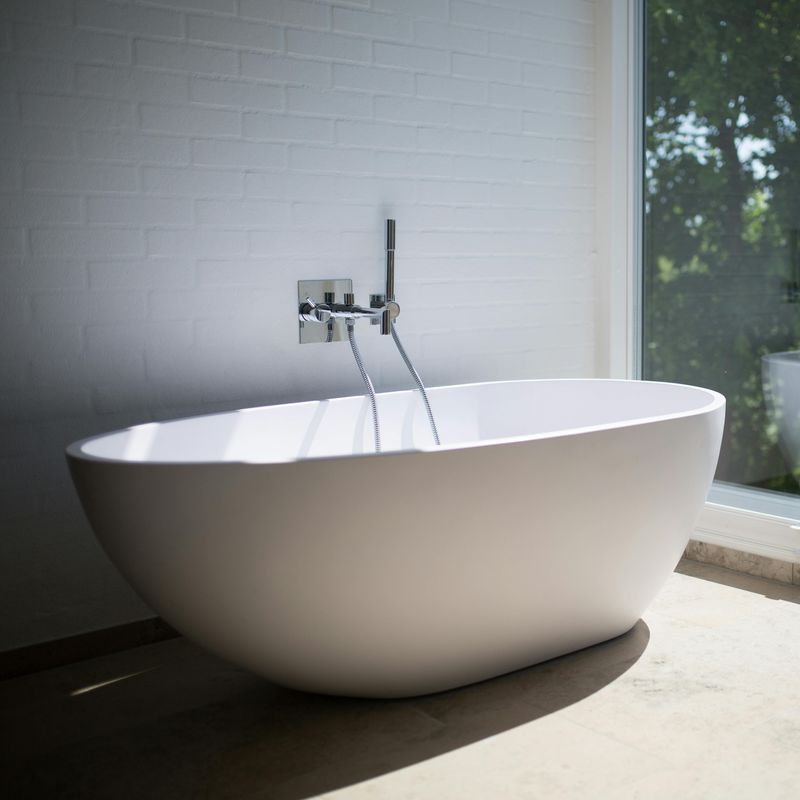 English
English
Jabra Sanitary is a sanitaryware supplier offering toilets, sinks, faucets, bathtubs, etc., at competitive prices. If you're a distributor, wholesaler, or project contractor, get a quote today!
 $23.9 Limited-time Offer
$23.9 Limited-time Offer Consignment Policy
Consignment Policy 20 Years of Experience
20 Years of Experience
Grab bars are an essential feature for making your bathroom more accessible. Where to put them and how tall they should be are issues you must know. This article will focus on the height requirements for toilet grab bars according to the ADA.
We will explain the correct measurements, grab bar types and their installation, why proper placement matters, and misconceptions about the grab bar height. By meeting the toilet grab bar height requirements, you're following the law and making your bathroom safer and more user-friendly.
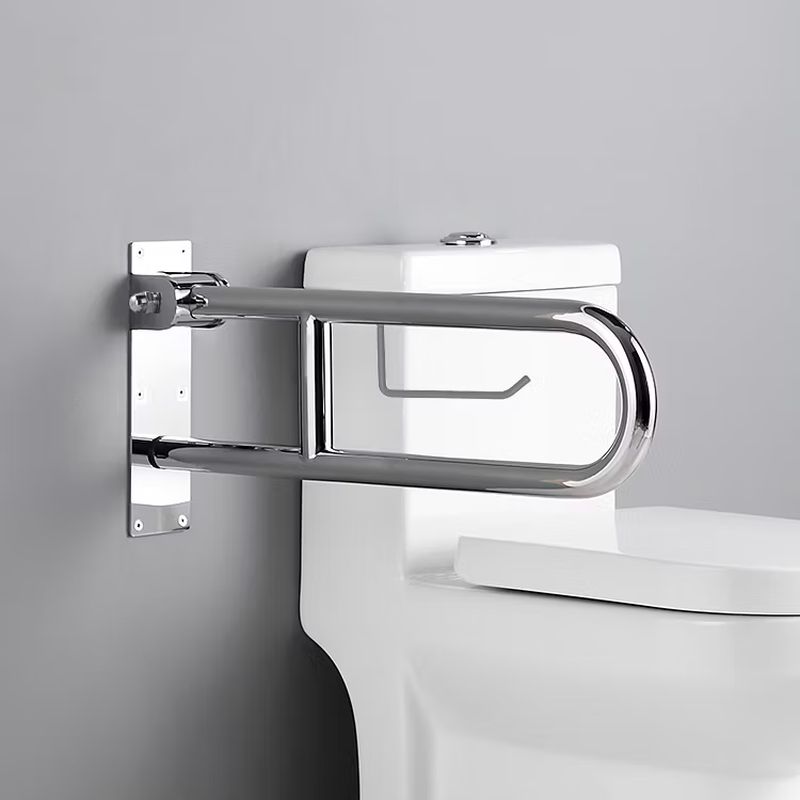
Table of Contents
Understanding ADA and Grab Bars
Standard Height for Grab Bar by Toilet to Ensure Safety
Basic ADA Requirements for Toilet Grab Bar Location
Determine the Right Height for Grab Bars in Different Spaces
5 Types of Grab Bars and Their Installation Requirements
Tips: How to Install a Toilet Bar
The Misconceptions about Grab Bar Height
Why Installing ADA-Compliant Grab Bars is Important
FAQs
Final Thoughts
Understanding ADA and Grab Bars
ADA means the Americans with Disabilities Act (ADA). This law ensures equal access to public spaces, including restrooms. ADA guidelines specify that bathrooms must have features like grab bars to assist people with mobility challenges, ensuring they can use the toilet safely and comfortably.
Grab bars are sturdy support bars installed around toilets, bathtubs, or showers. They provide a secure grip to help individuals transfer to and from the toilet, maintain balance, and prevent falls.
These bars are essential for seniors, people recovering from injuries, and individuals with disabilities.
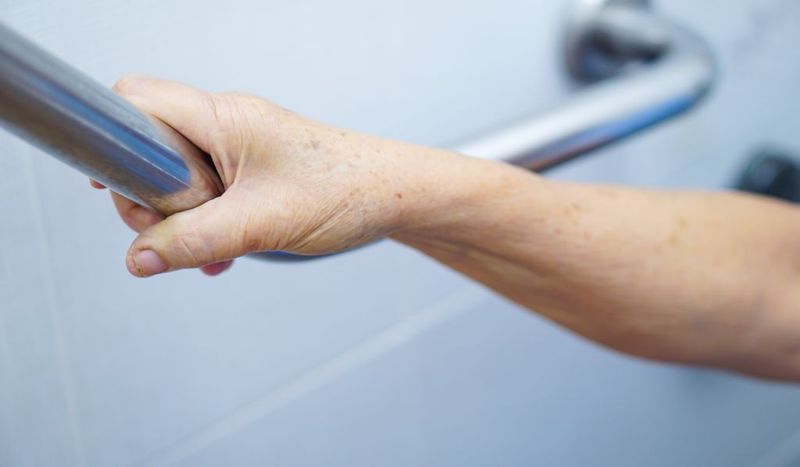
Understanding ADA grab bar guidelines is essential for architects, contractors, and business owners. Proper installation can create an inclusive and accessible environment for all.
Standard Height for Grab Bar by Toilet to Ensure Safety
According to ADA standards, the grab bar's height must be between 33 and 36 inches from the floor to the top of the grab bar. This range is carefully designed to accommodate individuals with varying needs, including those who use wheelchairs, walkers, or have limited mobility.
If installed too low, the bar may not offer enough leverage. If placed too high, it can become difficult to reach or use effectively.
Therefore, maintaining the 33- to 36-inch range ensures the grab bar serves its purpose for most users. By adhering to these ADA height requirements, bathrooms become safer and more accessible.
Basic ADA Requirements for Toilet Grab Bar Location
When it comes to ensuring safety and accessibility, the ADA outlines specific requirements for the location, dimensions, and strength of toilet grab bars. These rules help meet the needs of individuals with disabilities and varying mobility levels. Here is a breakdown:
Placement
Grab bars must be installed in two key locations: the side wall closest to the toilet and the rear wall behind the toilet.
The side wall grab bar must be 42 inches long and positioned no more than 12 inches from the rear wall. The rear wall grab bar should be 36 inches long. It extends 12 inches from the centerline of the toilet on one side and 24 inches on the other.
Height for Shorter and Taller Users
The ADA requires grab bar height to fall between 33 and 36 inches from the finished floor. This range ensures usability for both shorter and taller individuals. It also provides the necessary support to sit, stand, or transfer safely.
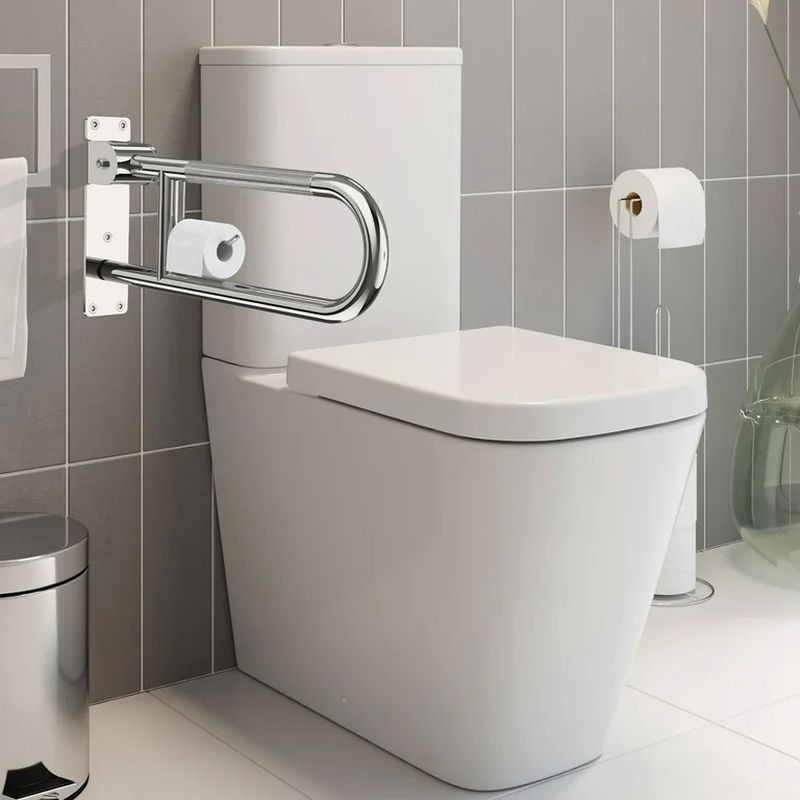
Diameter
Grab bars must have a diameter between 1.25 and 1.5 inches. This ensures a comfortable and secure grip for users.
Clearance
A 1.5-inch clearance between the grab bar and the wall is required. This space allows users to grip the bar without obstruction.
Strength
Grab bars must support a minimum of 250 pounds of force to ensure durability and reliability.
Determine the Right Height for Grab Bars in Different Spaces
The ADA grab bar requirements vary depending on the layout of the restroom and surrounding walls. Understanding how to determine the right height and placement ensures accessibility in all scenarios.
Here is the right height for grab bars in different spaces:
Commercial Toilets
In commercial spaces, the height for grab bars remains between 33 and 36 inches from the floor. Install a 42-inch grab bar on the side wall and a 36-inch bar on the rear wall to ensure proper support.
Toilet With One Side Wall
When there's only one side wall next to the toilet, the grab bar must be installed at the ADA-specified height (33 to 36 inches) and positioned horizontally along the wall. Ensure the bar is 42 inches long and starts 12 inches from the rear wall.
Toilet With Two Side Walls
In this layout, grab bars should be installed on both side walls, each at the standard ADA height (17 to 19 inches). This setup provides additional stability and support, benefiting users with varying mobility needs.
Toilet With No Side Walls
If no side walls are available, a grab bar must be installed on the rear wall only. The bar should be 36 inches long and centered above the toilet, at the required 33 to 36-inch height.
5 Types of Grab Bars and Their Installation Requirements
Selecting the right type of grab bar is essential for meeting ADA standards and improving bathroom safety. Each type serves a specific purpose and has unique installation requirements. Here is a breakdown:
Angled Grab Bars
These bars are installed at a 45-degree angle and are ideal for users who need both vertical and horizontal support. The ADA specifies that the height should still fall within the 33 to 36 inches range.
It is measured from the lower end of the bar. They are often used near toilets or showers to help with sitting, standing, and transferring.
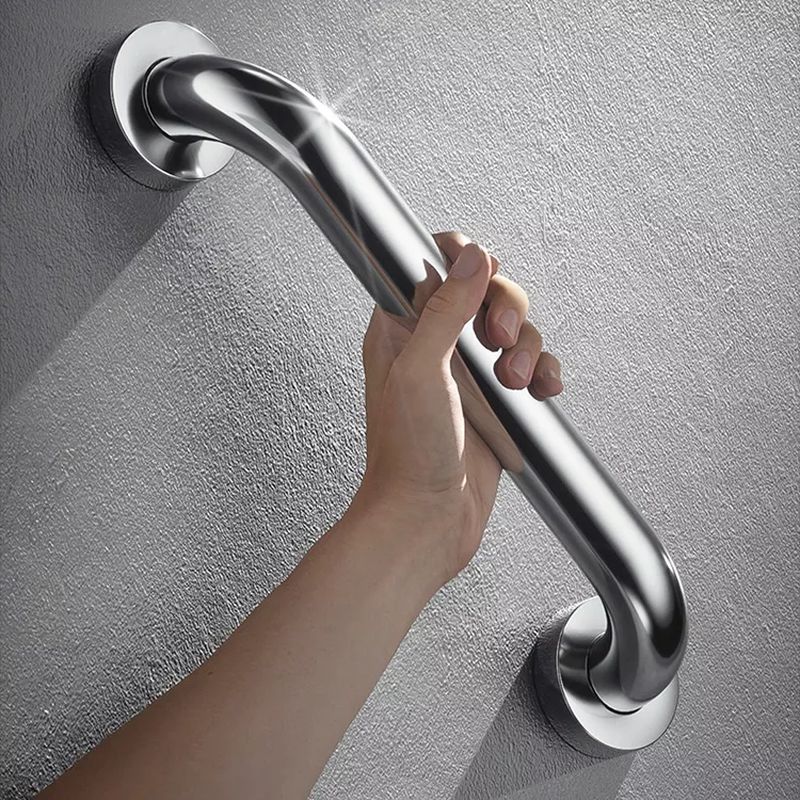
Straight Grab Bars
As the most common type, straight grab bars are installed horizontally on walls.
For ADA compliance, they must be 42 inches long on the side walls and 36 inches on the rear walls, with a height between 33 and 36 inches. These are ideal for commercial and residential restrooms.
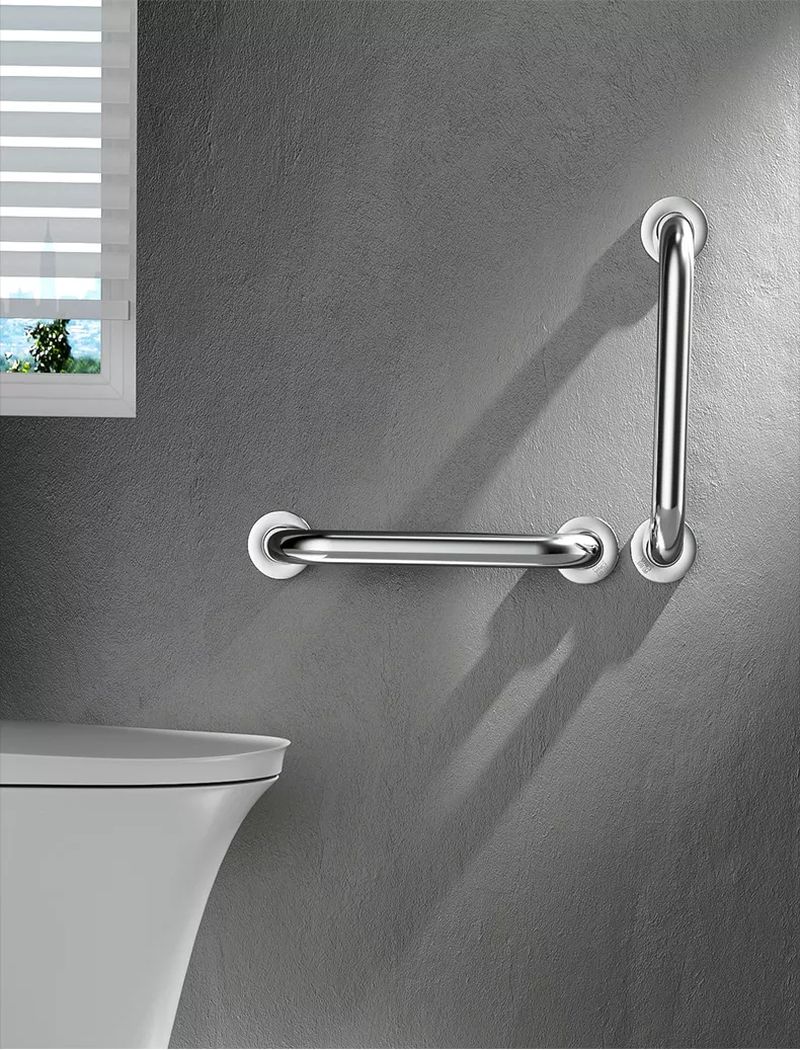
Folding Grab Bars
These bars fold up when not in use, making them perfect for small or multi-use bathrooms. Installed vertically or horizontally, they must meet the same grab bar height and strength requirements as standard grab bars. They can support at least 250 pounds of force.
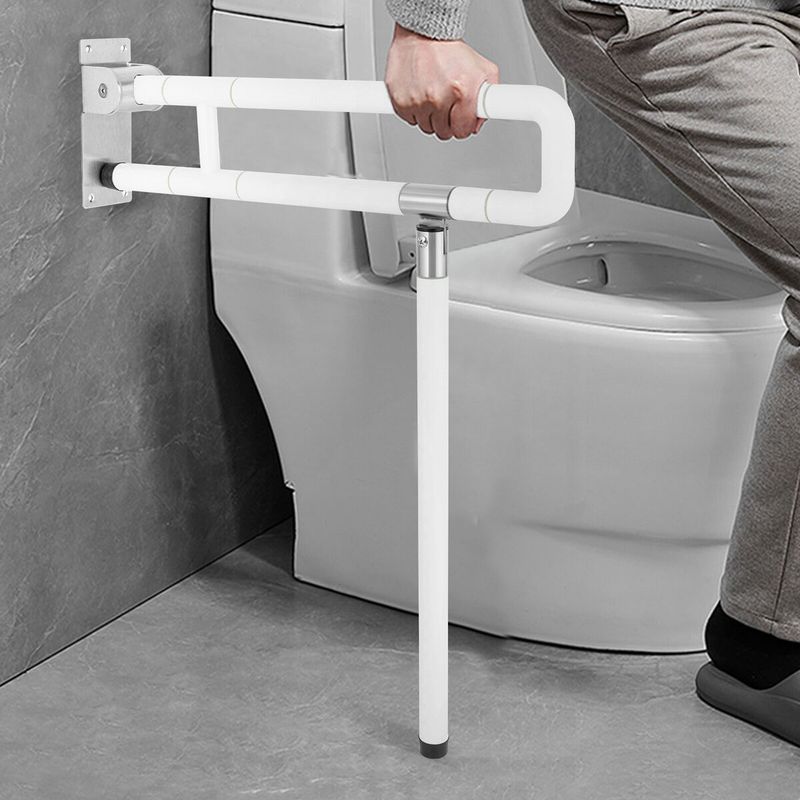
Suction Bars
These portable bars attach to surfaces using suction cups. While they are convenient for temporary support, they do not meet ADA standards as they lack strength and durability.
Free-Standing Bars
These bars are not wall-mounted but stand independently. They offer flexible support for individuals who cannot install wall grab bars.
However, they are not ADA-compliant and are better suited for residential settings.
Tips: How to Install a Toilet Bar
Proper installation of toilet grab bars is key to ensuring safety, ADA compliance, and long-term functionality.
Below are essential tips to guide you through the process:
Decide on the Placement and Height
Start by determining where the grab bars will go. ADA guidelines require a 42-inch bar on the side wall and a 36-inch bar on the rear wall, with a grab bar height of 33 to 36 inches from the floor to the top of the bar.
Proper placement provides the best support for sitting, standing, and transferring.
Determine Length for ADA Compliance
Ensure the bar length follows ADA standards. For side walls, bars must be 42 inches and placed no more than 12 inches from the rear wall. Rear wall grab bars must be 36 inches long, extending appropriately on both sides of the toilet's centerline.
Choose the Type, Material, and Finish
Select a grab bar type based on your needs (angled, straight, or folding). Opt for materials like stainless steel or durable aluminum, which are rust-resistant and sturdy.
Additionally, non-slip finishes offer better grip and safety.
Avoid Obstructions
Make sure there are no obstructions like towel racks, dispensers, or plumbing that could interfere with proper installation. Grab bars must be easily accessible and unobstructed.
Ensure It Supports Your Weight
ADA-compliant grab bars must support at least 250 pounds of force. Secure them to wall studs or use proper anchors for durability.
- Don't Forget Toilet Dimensions: Measure the toilet size and placement carefully. Bars must align correctly to support users when sitting down or standing up.
- Consider other upgrades: To further enhance safety, add features like shower seating, non-slip flooring, and accessible toilet designs. These upgrades create a safer and more user-friendly space.
Ensure Proper Installation
Install grab bars using heavy-duty screws and brackets to ensure stability. Always follow the manufacturer's instructions for the best results.
Hire an Accessible Bathroom Contractor
If you're unsure about installation, hire a professional contractor experienced in accessible bathroom designs. This ensures that grab bars meet ADA requirements and are securely installed.
The Misconceptions about Grab Bar Height
There are several misconceptions surrounding grab bar height and its use, which can lead to improper installation or avoidance of this essential safety feature. Let's address and clarify these common myths:
Grab Bars Are Unsightly
Many people believe grab bars ruin the bathroom's aesthetic. However, modern grab bars are available in stylish designs, finishes, and materials, such as brushed nickel, chrome, or matte black. These designs allow grab bars to blend seamlessly into any bathroom décor.
Grab Bars Are Only Necessary for Individuals With Mobility Challenges
While grab bars are essential for seniors and individuals with disabilities, they provide safety for everyone. Accidents, like slips and falls, can happen to anyone, especially in wet bathroom environments. Grab bars offer stability and prevent injuries for users of all ages.
Grab Bars Should Be Installed at the Same Height
One common misconception is that all grab bars should be at a uniform height. In reality, ADA guidelines recommend specific heights for different placements, such as 33 to 36 inches from the floor. Sidewall and rear wall grab bars have unique length and location requirements for proper functionality.
Grab Bars Should Be Installed at the Highest Possible Height
Installing grab bars too high can make them unusable for many individuals, especially those with limited strength or mobility. Proper ADA-compliant heights ensure the bars are within easy reach and provide maximum support.
Why Installing ADA-Compliant Grab Bars is Important
Installing ADA-compliant grab bars is essential for ensuring safety, accessibility, and legal compliance in bathrooms.
First and foremost, grab bars provide stability and support for people with disabilities, seniors, and anyone recovering from injuries.
Bathrooms can be hazardous, with wet and slippery surfaces increasing the likelihood of accidents. Properly installed grab bars at the ADA-recommended height help users maintain balance while sitting, standing, or transferring to and from the toilet.
Second, adhering to ADA standards is a legal requirement for public and commercial spaces. Non-compliance can result in penalties, fines, or legal action.
Ensuring bathrooms meet these guidelines demonstrates a commitment to inclusivity. It also makes facilities accessible to everyone, including individuals with disabilities.
Additionally, installing grab bars improves user confidence and independence. For people who require extra assistance, knowing they can rely on sturdy and well-placed grab bars enhances their comfort and autonomy in using the bathroom.
Lastly, ADA-compliant grab bars also benefit residential settings. They are a valuable addition to aging-in-place homes, ensuring long-term safety for family members.
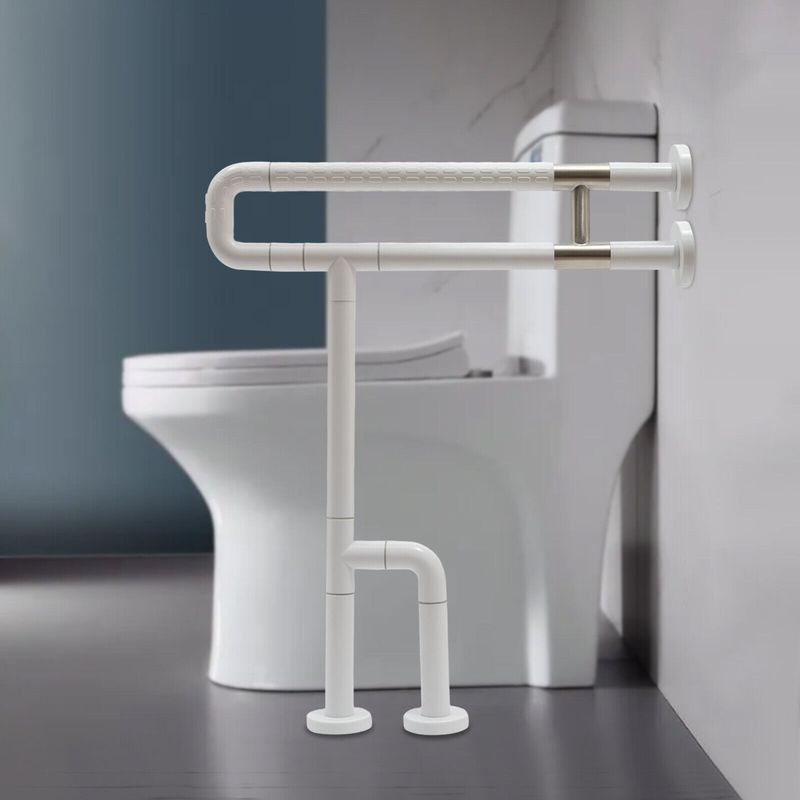
FAQs
Here are some commonly asked questions about the toilet grab bar height:
What is the ADA height requirement for toilets?
The ADA height requirement for toilets is between 17 inches (43.18 cm) and 19 inches (48.26 cm) above the finished floor. This range is designed to facilitate easier transfers for individuals with mobility impairments.
Why do you put a grab bar behind the toilet?
Grab bars behind the toilet provide additional stability and support for individuals. They can also be transferred from a standing to a seated position, improving overall safety and accessibility.
What height should a shower grab bar be?
Shower grab bars are typically installed between 33 inches and 36 inches from the floor. For new construction, the ADA specifically recommends 34-38 inches for optimal support and accessibility.
What is the best height for a grab bar in a bathtub?
The ideal height for bathtub grab bars is between 33 inches and 36 inches from the floor. However, specific requirements may vary depending on the user's needs.
Why does the ADA specify a range instead of a single height for grab bars?
The ADA specifies a range to accommodate users of various heights, abilities, and needs. This ensures grab bars are accessible and effective for everyone, from those in wheelchairs to those with limited mobility.
Final Thoughts
Ensuring that toilet grab bars meet ADA height requirements is crucial for creating an accessible and safe bathroom environment. Before installation, you should measure carefully the space for different grab bars.
Apart from that, don't forget to follow the installation tips. Knowing all about the ada toilet grab bar requirements, you can start on your own ada grab bar toilet from Jabra Sanitary.










